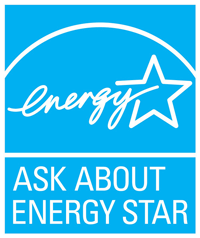
Between a relaxing vacation or a lengthy trip for work, taking a trip means making plans for your heating and cooling system. You don't need it if you’re not home, so you can make adjustments as appropriate to limit your energy use. Simultaneously, you don’t want to just shut it down for the entire time you're out of the house.
For the most part, it’s best to leave your HVAC system going and just make adjustments depending on the time of year. That way you can reduce energy costs without having to worry about getting back to an uncomfortable home. We’ll explain why you should avoid turning your HVAC system off as well as the most energy-efficient thermostat settings for summer and winter.
This Is Why You Shouldn’t Leave Your Thermostat on Hold
While you might be wanting to leave your HVAC system off before a trip, this could end up leading to annoying problems by the time you get back. This is especially true when the weather will be severely hot or cold while you’re away from home.
For example, shutting the HVAC system down during the summer can produce very high humidity. Not only will your home feel gross when you return, but it may have also stimulated mold/mildew growth or pest infestations.
And over the winter, leaving the furnace off might lead to pipes freezing or even bursting. It’s an awful feeling to return home from a long trip only to discover extensive water damage near a broken pipe.
Best Thermostat Settings While at Work
You can optimize the temperature even as you come and go to work. Considering you’re out of the house for about 8 hours or longer, it doesn’t seem sensible to keep an empty home heated or cooled as if you were there. Generally, it’s suggested to adjust the thermostat by 5 degrees or more. That means that if you prefer a comfortable 72 degrees, consider raising it to 76-77 while you’re gone.
But you may save even more if you're open to further adjusting the temperature. As stated by the Department of Energy, you may save around 10% on your HVAC costs by increasing the adjustment to 7-10 degrees.
Energy-Efficient Thermostat Settings While on Vacation in Summer
If you’re leaving for a lengthier trip in the hottest part of summer, you can make bigger adjustments. This prevents wasting energy while still defending your home from the hassles that come with leaving it without air conditioning. Around 5 degrees is recommended for shorter trips while closer to 10 degrees is ideal if you’ll be gone for 2 weeks or longer. If you prefer keeping the house at 72 in the summer, 78-82 should offer beneficial results.
Ideal Thermostat Settings While On a Trip in Winter
To determine the most energy-efficient thermostat setting for a winter getaway, just lower the temperature by the same amount you would raise it in summer. 68 is a frequent winter thermostat setting, so turning it down to 63-58 will prevent ice from forming on pipes while restricting how long your furnace runs.
A Smart Thermostat Can Help: Advantages of a Smart Thermostat
A great way to manage your home’s HVAC system while away is by investing in a smart thermostat. This special type of programmable thermostat utilizes intelligent software to monitor your preferred comfort habits. It gradually understands these preferences and makes automatic changes to the schedule for maximum energy efficiency. And with Wi-Fi compatibility, you can remotely control your HVAC system with a smartphone or tablet.
Smart thermostats are loaded with features to help you save even more. To provide an example, certain models can observe electricity prices to boost heating or cooling when prices are lowest. They are compatible with high-efficiency, variable-speed equipment to fine-tune how long your HVAC system should run. It’s the optimal tool to enhance how you control your comfort system. If you’re planning on investing in a smart thermostat, there are a variety of ways you can lower your costs, effectively getting a smart thermostat for free. The next time you leave for vacation, you can enjoy true peace of mind that your HVAC system won’t stir up any trouble while you’re gone.



